
Copernical Team
Mini-jet found near Milky Way's supermassive black hole
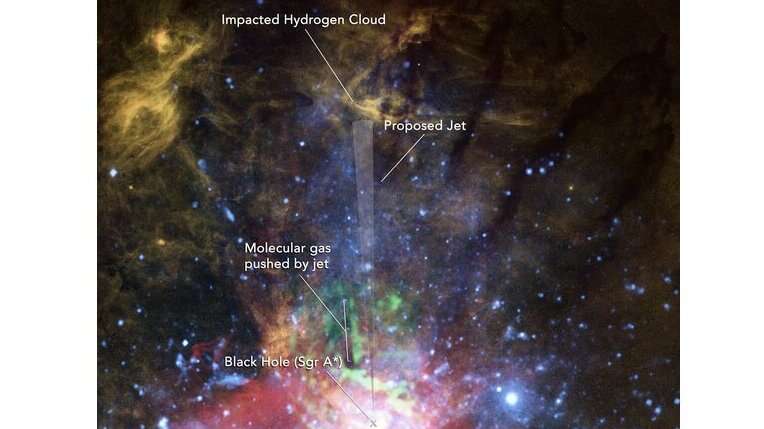
Our Milky Way's central black hole has a leak. This supermassive black hole looks like it still has the vestiges of a blowtorch-like jet dating back several thousand years. NASA's Hubble Space Telescope hasn't photographed the phantom jet but has helped find circumstantial evidence that it is still pushing feebly into a huge hydrogen cloud and then splattering, like the narrow stream from a hose aimed into a pile of sand.
This is further evidence that the black hole, with a mass of 4.1 million Suns, is not a sleeping monster but periodically hiccups as stars and gas clouds fall into it. Black holes draw some material into a swirling, orbiting accretion disk where some of the infalling material is swept up into outflowing jets that are collimated by the black hole's powerful magnetic fields. The narrow "searchlight beams" are accompanied by a flood of deadly ionizing radiation.
"The central black hole is dynamically variable and is currently powered down," said Gerald Cecil of the University of North Carolina in Chapel Hill.
NASA Goddard helps ensure asteroid deflector hits target, predicts and will observe impact results
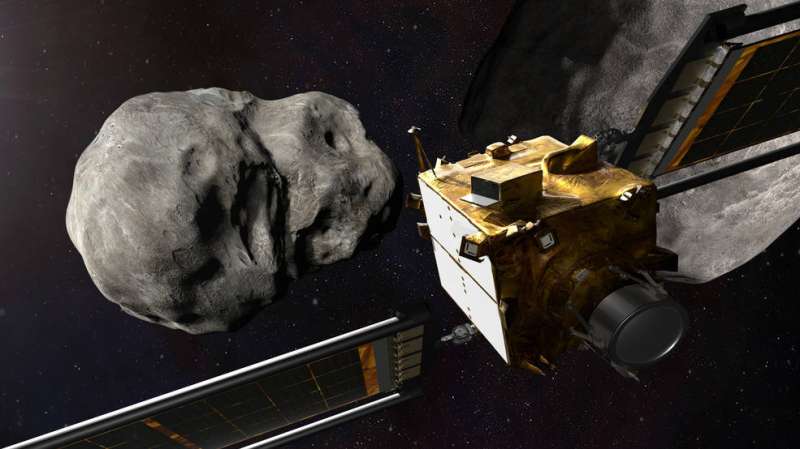
Although the chance of an asteroid impacting Earth is small, even a relatively small asteroid of about 500 feet (about 150 meters) across carries enough energy to cause widespread damage around the impact site. NASA leads efforts in the U.S. and worldwide both to detect and track potentially hazardous asteroids and to study technologies to mitigate or avoid impacts on Earth. If an asteroid were discovered and determined to be on a collision course with Earth, one response could be to launch a "kinetic impactor"—a high-velocity spacecraft that would deflect the asteroid by ramming into it, altering the asteroid's orbit slightly so that it misses Earth. NASA's Double Asteroid Redirection Test (DART) will be the first mission to demonstrate asteroid deflection using a kinetic impactor.
DART will test kinetic impactor technology by targeting a double asteroid that is not on a path to collide with Earth and therefore poses no actual threat to the planet.
NASA's newest X-ray telescope rockets into orbit
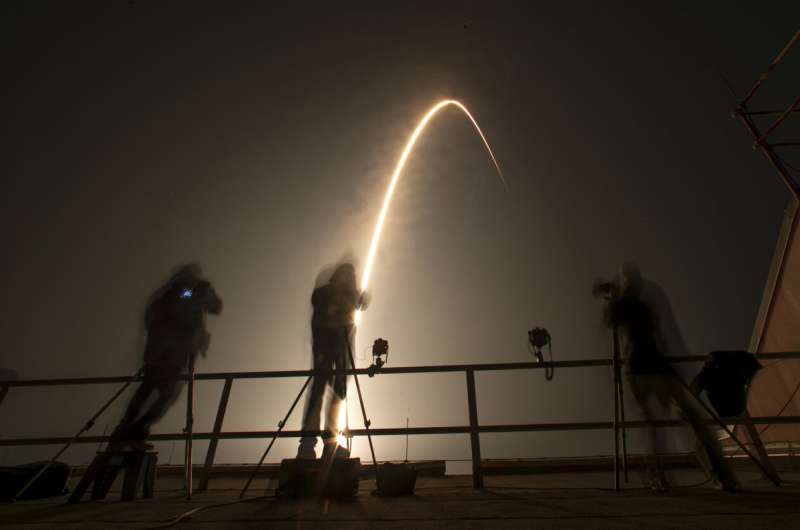
NASA's newest X-ray observatory rocketed into orbit Thursday to shed light on exploded stars, black holes and other violent high-energy events unfolding in the universe.
Chinese astronauts give science lesson from space station

Chinese astronauts on Thursday beamed back a science lesson from the country's under-construction space station.
The lecture focused on physics, aiming to illustrate how the weightless environment affects buoyancy, the movement of objects and optics.
Join our online ESA-NASA Advanced Manufacturing conference
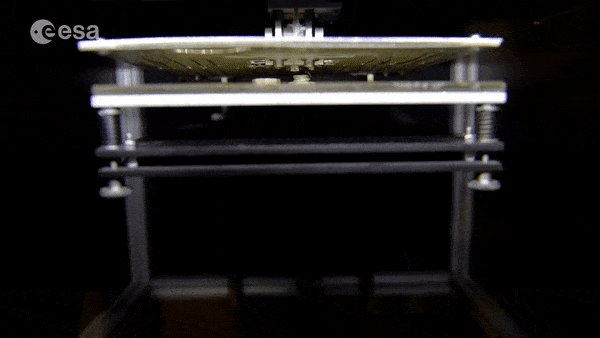
Next year’s 1st International Conference on Advanced Manufacturing for Air, Space and Land Transportation, co-organised by ESA and NASA, is moving online.
Webb moved to meet Ariane 5
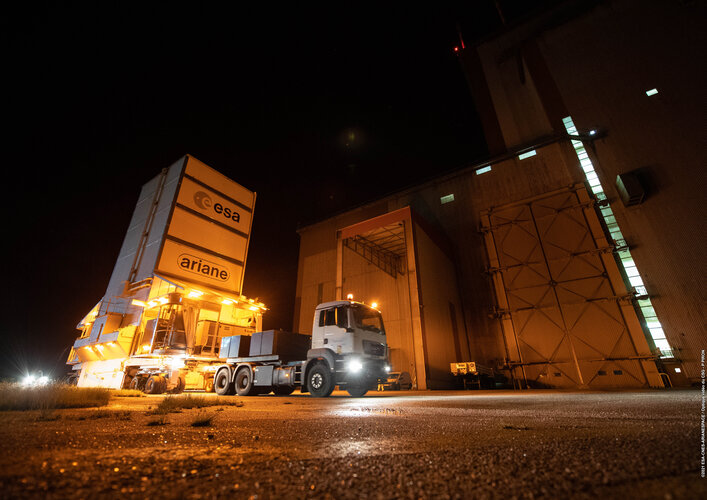 Image:
Image:
The James Webb Space Telescope was transferred to the final assembly building at Europe’s Spaceport in French Guiana on 7 December 2021, to meet its Ariane 5 launch vehicle.
Stowed inside a special 23-tonne transport container, Webb was protected and monitored throughout the transfer.
Ariane 5 was already moved to the same building on 29 November. Here, adjustable platforms allow engineers to access the launch vehicle and its payload.
The next steps are to hoist Webb to the upper platform which has been prepared so that Webb can be integrated on Ariane 5’s upper stage and then encapsulated inside
China's lunar rover spots cube-like object on Moon, sparking curiosity
 The cube-like object spotted recently by China's lunar rover on the far side of the moon aroused wild curiosity in cyberspace worldwide this week.
Yutu 2, the lander and rover of the Chang'e 4 probe, captured an obscure but intriguing image about 80 meters from its location during the mission's 36th lunar day, according to Our Space, a Chinese science channel that published the machine's l
The cube-like object spotted recently by China's lunar rover on the far side of the moon aroused wild curiosity in cyberspace worldwide this week.
Yutu 2, the lander and rover of the Chang'e 4 probe, captured an obscure but intriguing image about 80 meters from its location during the mission's 36th lunar day, according to Our Space, a Chinese science channel that published the machine's l NASA Returns Hubble to Full Science Operations
 NASA's Hubble Space Telescope team recovered the Space Telescope Imaging Spectrograph on Monday, Dec. 6, and is now operating with all four active instruments collecting science. The team has still not detected any further synchronization message issues since monitoring began Nov. 1.
The team will continue work on developing and testing changes to instrument software that would allow them
NASA's Hubble Space Telescope team recovered the Space Telescope Imaging Spectrograph on Monday, Dec. 6, and is now operating with all four active instruments collecting science. The team has still not detected any further synchronization message issues since monitoring began Nov. 1.
The team will continue work on developing and testing changes to instrument software that would allow them LCO Scientists Confirm the Discovery of the First Moving Microlensing Arcs
 On April 18, 2019, the European Space Agency's Gaia Mission alerted astronomers worldwide to an unusually bright but fleeting celestial event: the gravitational microlensing event Gaia19bld. The temporary, chance alignment between two unrelated star systems produced twin images of the background star and gave scientists their first opportunity to actually observe the arc-shaped images move in re
On April 18, 2019, the European Space Agency's Gaia Mission alerted astronomers worldwide to an unusually bright but fleeting celestial event: the gravitational microlensing event Gaia19bld. The temporary, chance alignment between two unrelated star systems produced twin images of the background star and gave scientists their first opportunity to actually observe the arc-shaped images move in re First crew of space station provide a full update on China's progress
 The three astronauts involved in the Shenzhou XII mission have recovered well after their 3-month spaceflight and will return to regular training once related health assessments are completed.
Major General Jing Haipeng, another astronaut, said on Tuesday the post-spaceflight recovery period has three phases: isolation, convalescence and observation.
The three Shenzhou XII astronauts
The three astronauts involved in the Shenzhou XII mission have recovered well after their 3-month spaceflight and will return to regular training once related health assessments are completed.
Major General Jing Haipeng, another astronaut, said on Tuesday the post-spaceflight recovery period has three phases: isolation, convalescence and observation.
The three Shenzhou XII astronauts 